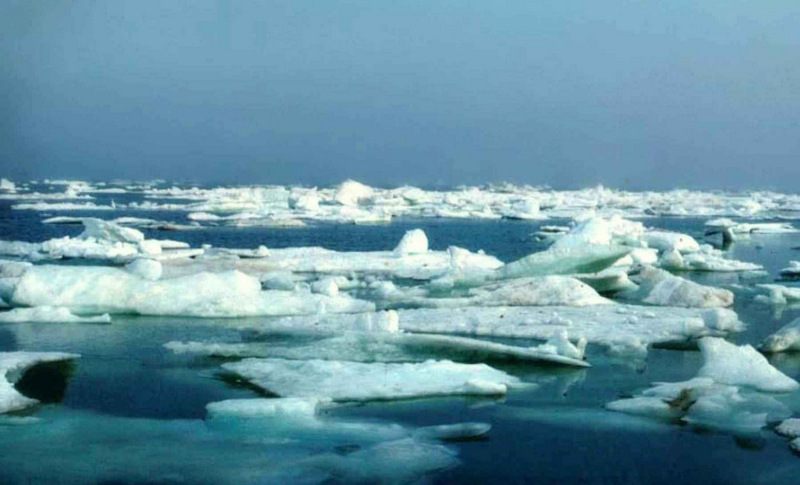
On September 28, the White House will host science ministers and representatives from indigenous groups to reflect on Arctic science, monitoring and data sharing. Ross A. Virginia and Michael Sfraga offer their view on the advancement of scientific study in the region.
Pick up any major news publication and it will likely include an article about the rapid, profound and accelerating changes we see in the Arctic. The influence of melting glaciers, declining sea ice and rising sea levels now reach beyond the Arctic and are recognized as global issues requiring international action.
The human dimension, though often underreported, also needs urgent attention. Northern societies are on the frontline of climate change and are pressed to respond to the dual forces of environmental change and globalization. Even though the indigenous peoples of the Arctic have a long history of resilience when confronted with change, the pace today is unprecedented. We see opportunities to better meet the science and policy needs of Arctic peoples by closing gaps in international investments in infrastructure for applied research and education.
We believe the White House Arctic Science Ministerial on September 28, the first event of its kind, is a special opportunity to bring attention to and focus on the ever-evolving challenges and opportunities facing citizens of the North and throughout the world. It’s a chance to put science ministers, Indigenous leaders, researchers and policy makers into the same room to make sure that we tackle the right issues, gather and share the right information and create the right tools so that Arctic communities and researchers will work together to meet sustainability challenges.
Many Arctic researchers work closely with communities on specific questions arising from their specialized area of expertise. Institutions are well equipped to support this kind of work. However, we become pressed when the research must span multiple fields of expertise, involve many nations and requires specialized equipment and expensive logistical support.
How then might the Arctic Science Ministerial advance international science and policy under their four themes?
- Addressing Arctic science challenges
- Strengthening observation and data sharing networks
- Applying science to build regional resilience
- Using science as a vehicle to improve education and citizen empowerment
Perhaps most of all by demonstrating a commitment to value and foster the growth of international collaborative networks and their infrastructure needs, especially those grounded in a philosophy where researchers partner with Arctic communities.
Many Arctic science organizations and funders adhere to the ethical responsibilities of scientists to collaborate openly with communities, pose research questions relevant to local needs, and share widely their research findings with the public. As more non-Arctic nations establish research programs in the region, it becomes imperative to identify research values and protocols that respect the rights and aspirations of Arctic residents.
The ministerial should set a climate of cooperation and expectation where new Arctic partners, including observer nations in the Arctic Council, commit to significant investments in shared facilities, student and researcher exchange and networking, and data sharing; all under high standards for the ethical conduct of research with indigenous peoples.
We are fortunate to be a part of two initiatives that encourage international and cross-cutting research and are useful models for consideration by the ministerial. The Fulbright Arctic Initiative, a new international applied research program, and the University of the Arctic (UArctic) (and its Institute for Arctic Policy) operate on the premise that the application of innovative collaborative research models and the growth of educational networks are essential to create the problem solving capacity required to address Arctic issues and policy challenges.
The Fulbright Arctic Initiative (2015-2017), sponsored by the U.S. State Department’s Bureau of Educational and Cultural Affairs, brings together 19 scholars in diverse fields from the eight Arctic nations to work in teams on energy, water, health and infrastructure problems. At a larger scale, UArctic has grown from a handful of institutions in 2001 to over 170 members today. This virtual university facilitates collaborative research across disciplines through a system of more than 30 Thematic Networks covering topics such as permafrost, digital media, fisheries, engineering, geopolitics and teacher education.
The value of new investment in infrastructure support for building research networks will be made clear in October during the Fulbright Arctic Week in Washington, D.C. We will demonstrate how small teams of Fulbright Arctic scholars can formulate policy relevant research and reach important findings and recommendations in a relative short time (18 months). This is made possible by infrastructure investments in research coordination, team building and group communication, public outreach and access to policy makers provided through Fulbright and the combined research networks of the scholars.
If we want to build new educational and research centers and networks in the Arctic and apply local traditional knowledge to solving problems of Arctic change, we need international funding – no one nation can make this happen on its own. Yet current funding programs are rarely able to support the costs of establishing productive relationships between researchers and communities. Making meaningful collaborations takes time, but are made difficult by short funding cycles and the pressure for quick results.
The success of UArctic as a virtual university and research network is well recognized by the Arctic community and internationally by its status as an observer in the Arctic Council. The long-term funding model for this path-breaking effort is perhaps less clear. We must make progress to focus and coordinate international investments in sustaining innovative research organizations and networks.
Bringing science leaders from the expanding list of “Arctic” nations to the White House to grapple with these issues is a significant step toward a new research climate for the Arctic, one focused on understanding rapid Arctic change and the needs of its peoples. We are encouraged.
This article originally appeared on Arctic Deeply.
